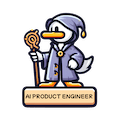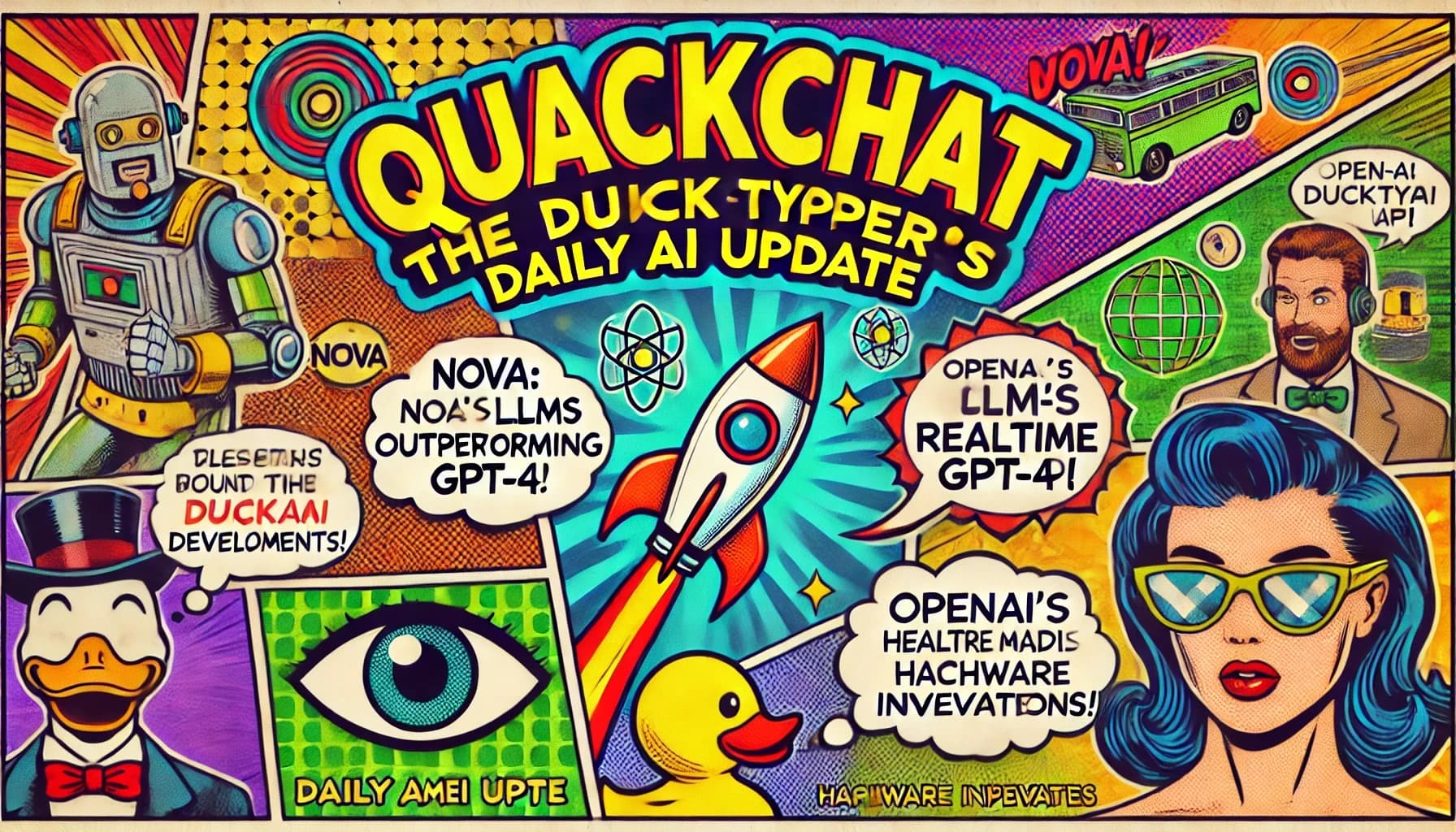🚀 Welcome to QuackChat: The AI Revolution is Here!
Hey there, DuckTypers! It's your favorite AI professor, Rod, back with another daily QuackChat. Remember when we thought GPT-4 was the pinnacle of AI? Well, hold onto your keyboards because there's a new player in town that's about to flip the script on everything we thought we knew about Large Language Models. Let's dive into Nova AI!
🧠 Nova's Stellar Performance: A New Champion Emerges
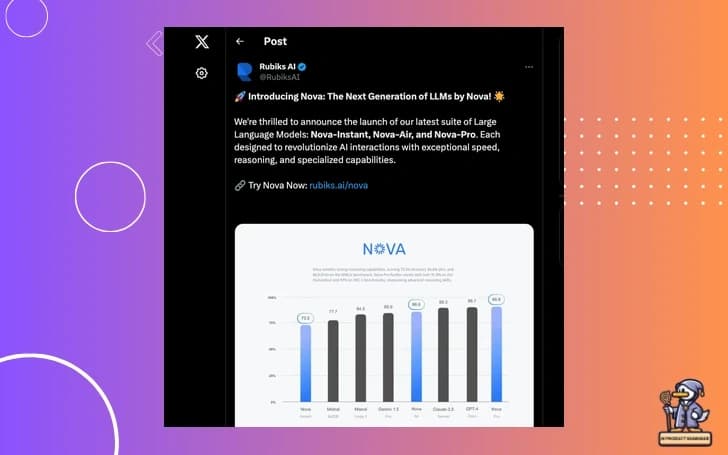
Let's kick things off with a bang! Have you heard about the new kid on the block? Nova, the suite of Large Language Models (LLMs) from RubiksAI, is making waves in the AI community. And they are impressive!
Nova's Trio of Triumph
- Nova-Instant: The speedster of the bunch, perfect for quick, cost-effective solutions.
- Nova-Air: A jack-of-all-trades, excelling across diverse applications.
- Nova-Pro: The crown jewel, outshining even GPT-4 and Claude-3.5 in benchmark tests.
Now, let's talk numbers, because in the world of AI, benchmarks are king. Nova-Pro is flexing its cognitive muscles with an astounding 88.8% score on the MMLU (Massive Multitask Language Understanding) test. For those of you new to the class, MMLU is like the Olympics of AI testing, covering a wide range of human knowledge. But wait, there's more!
- 97.2% on ARC-C for reasoning
- 96.9% on GSM8K for mathematics
- 91.8% on HumanEval for coding
These aren't just numbers, DuckTypers. They represent a significant leap forward in AI capabilities. We're talking about machines that can reason, calculate, and code at levels approaching human experts. It's mind-boggling!
But here's a question for you: How do you think these advancements will impact various industries? Drop your thoughts in the comments below – I'd love to hear your predictions!
🎨 LumiNova: Painting the Future of AI
Now, let's switch gears and talk about something visually stunning. Enter LumiNova, the latest breakthrough in image generation. This isn't just another text-to-image model; LumiNova is pushing the boundaries of visual AI creativity.
Imagine being able to generate images with unparalleled quality and diversity. That's what LumiNova promises. But here's where it gets really interesting: LumiNova complements the Nova suite, creating a powerful ecosystem of AI models that can understand, reason, and create across multiple modalities.
Think about the possibilities:
- Architects designing buildings with AI assistance
- Artists collaborating with AI for unique creations
- Game developers generating entire worlds with a few prompts
The future of visual content creation is here, and it's powered by AI. What would you create with LumiNova? Share your ideas in the comments!
🗣️ OpenAI's Realtime API: The Voice Revolution
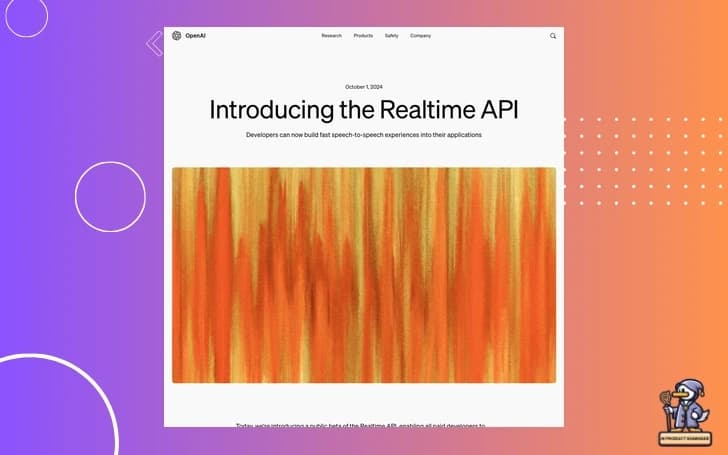
Alright, DuckTypers, let's talk about something that's going to change the way we interact with AI: OpenAI's new Realtime API. This is not just another update; it will change the world of voice interactions.
What's the Big Deal?
The Realtime API enables speech-to-speech capabilities, making conversations with AI more natural and fluid than ever before. Imagine chatting with an AI assistant that responds in real-time, with natural pauses and intonations. It's like talking to a real person, but with the vast knowledge of an AI at its fingertips!
But here's where it gets really exciting:
- Immediate Responses: No more awkward waiting times. The AI responds as quickly as a human would.
- Natural Flow: The conversation feels more organic, with the AI adapting to your pace and style.
- Multilingual Support: Breaking language barriers has never been easier.
Now, let's break this down with some pseudo-code to understand how it might work:
def realtime_conversation(user_input):
while user_is_speaking:
audio = capture_audio()
text = speech_to_text(audio)
response = generate_response(text)
audio_response = text_to_speech(response)
play_audio(audio_response)This simplified pseudo-code shows how the Realtime API could continuously process user input and generate responses on the fly. It's a beautiful dance of speech recognition, natural language processing, and speech synthesis, all happening in milliseconds!
But here's a question to ponder: How do you think this technology will impact industries like customer service, education, or even entertainment? Share your thoughts in the comments!
👁️ Vision Fine-Tuning: Seeing is Believing
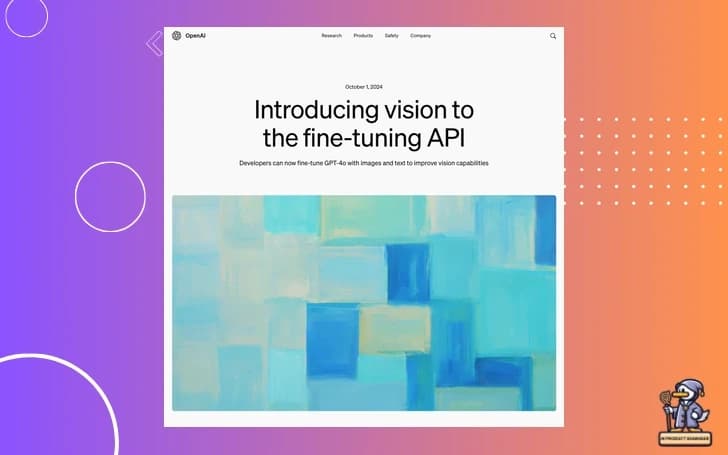
Now, let's talk about something that's opening up new possibilities in the world of computer vision. OpenAI has introduced vision capabilities to their fine-tuning API. This is huge, DuckTypers!
Why is This a Big Deal?
- Custom Visual Tasks: Train models for specific visual recognition tasks tailored to your needs.
- Improved Accuracy: Fine-tuning allows models to specialize, leading to better performance in niche areas.
- Multimodal AI: Combine text and vision for more comprehensive AI applications.
Let's break this down with a simple diagram:
Raw Image Data → Pre-trained Vision Model → Fine-tuning → Specialized Vision Model
↑ ↓
Custom Dataset ← Feedback Loop ← Evaluation ← Specific Task Application
This process allows for incredible customization. Imagine training a model to recognize specific types of cells for medical research, or to identify defects in manufacturing with superhuman accuracy.
But I'm curious: What specific vision tasks would you like to fine-tune an AI for? Let me know in the comments – your ideas could be the next big AI application!
💾 Hardware Innovations: The Backbone of AI Progress
Let's not forget about the unsung heroes of the AI revolution: the hardware that makes all this possible. We're seeing some exciting developments in this space that are pushing the boundaries of what's computationally feasible.
H200s and B100s: The Powerhouses of AI
- H200s: These bad boys are already on the road, with setups boasting 8x H200 GPUs and a whopping 4TB of RAM. That's some serious computational muscle!
- B100s: While still on the horizon, these promise to take AI processing to the next level.
But why does this matter? Well, DuckTypers, it's all about scale and speed. These hardware advancements allow us to train larger models, process more data, and run complex AI operations faster than ever before.
Here's a quick comparison to put things in perspective:
Processing Power Memory AI Training Speed
Old GPUs: X Y GB Z hours
H200s: 10X 4 TB Z/10 hours
B100s (estimated): 20X 8 TB Z/20 hours
These aren't just incremental improvements; they're quantum leaps that open up new possibilities in AI research and application.
Now, I want to hear from you: How do you think these hardware advancements will impact the accessibility and democratization of AI technology? Drop your thoughts in the comments!
🎓 Wrapping Up: The Future is AI
Alright, DuckTypers, we've covered a lot of ground today. From Nova's impressive language models to OpenAI's revolutionary APIs, from LumiNova's visual prowess to cutting-edge hardware innovations, the AI landscape is evolving at breakneck speed.
But remember, with great power comes great responsibility. As we embrace these technological advancements, we must also consider their ethical implications and ensure that AI benefits humanity as a whole.
So, here's your homework (don't worry, it's fun!):
- Explore one of the technologies we discussed today in more depth.
- Think about how it could be applied in your field of work or study.
- Share your insights and ideas in the comments below.
Let's keep the conversation going and shape the future of AI together!
Until next time, this is Professor Rod signing off. Keep quacking, keep coding, and keep pushing the boundaries of what's possible with AI!
